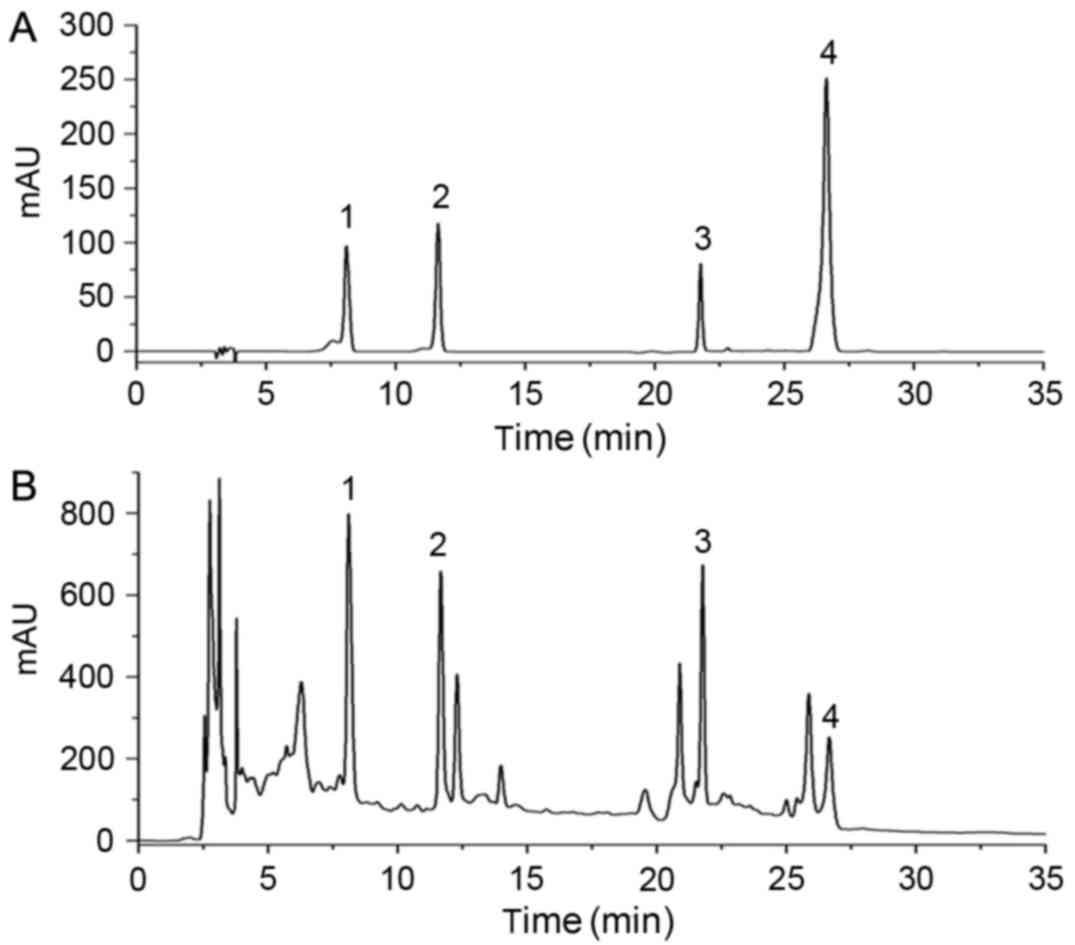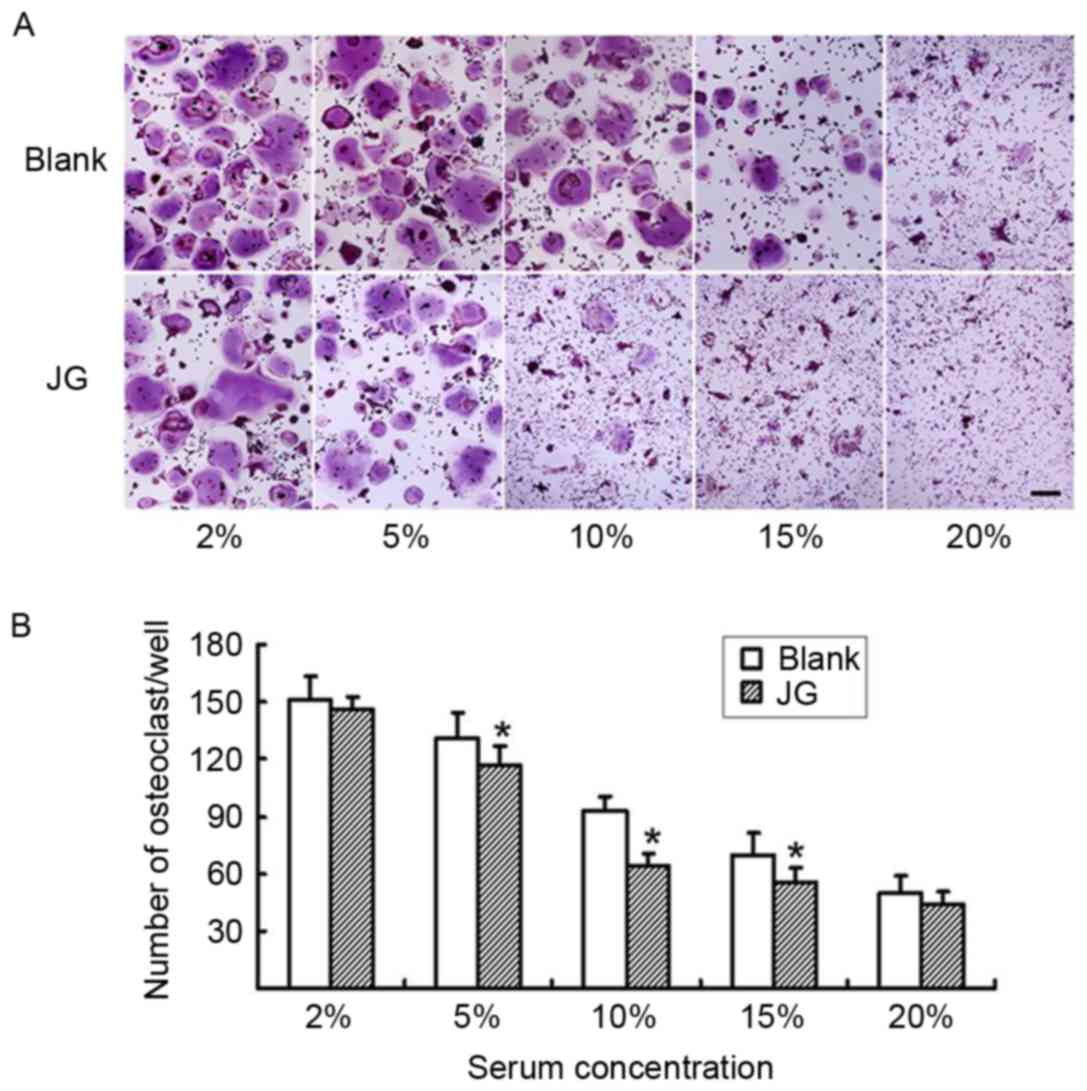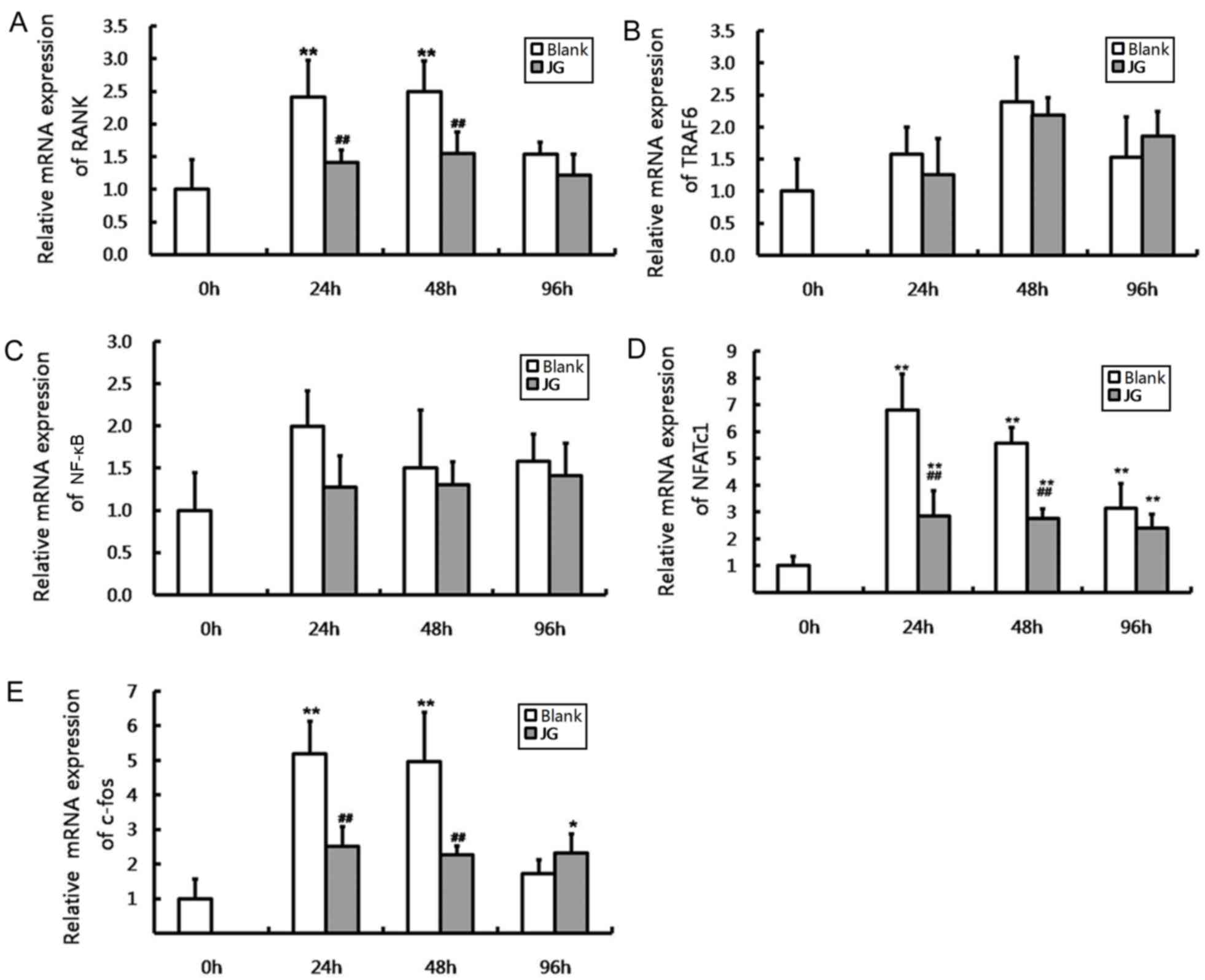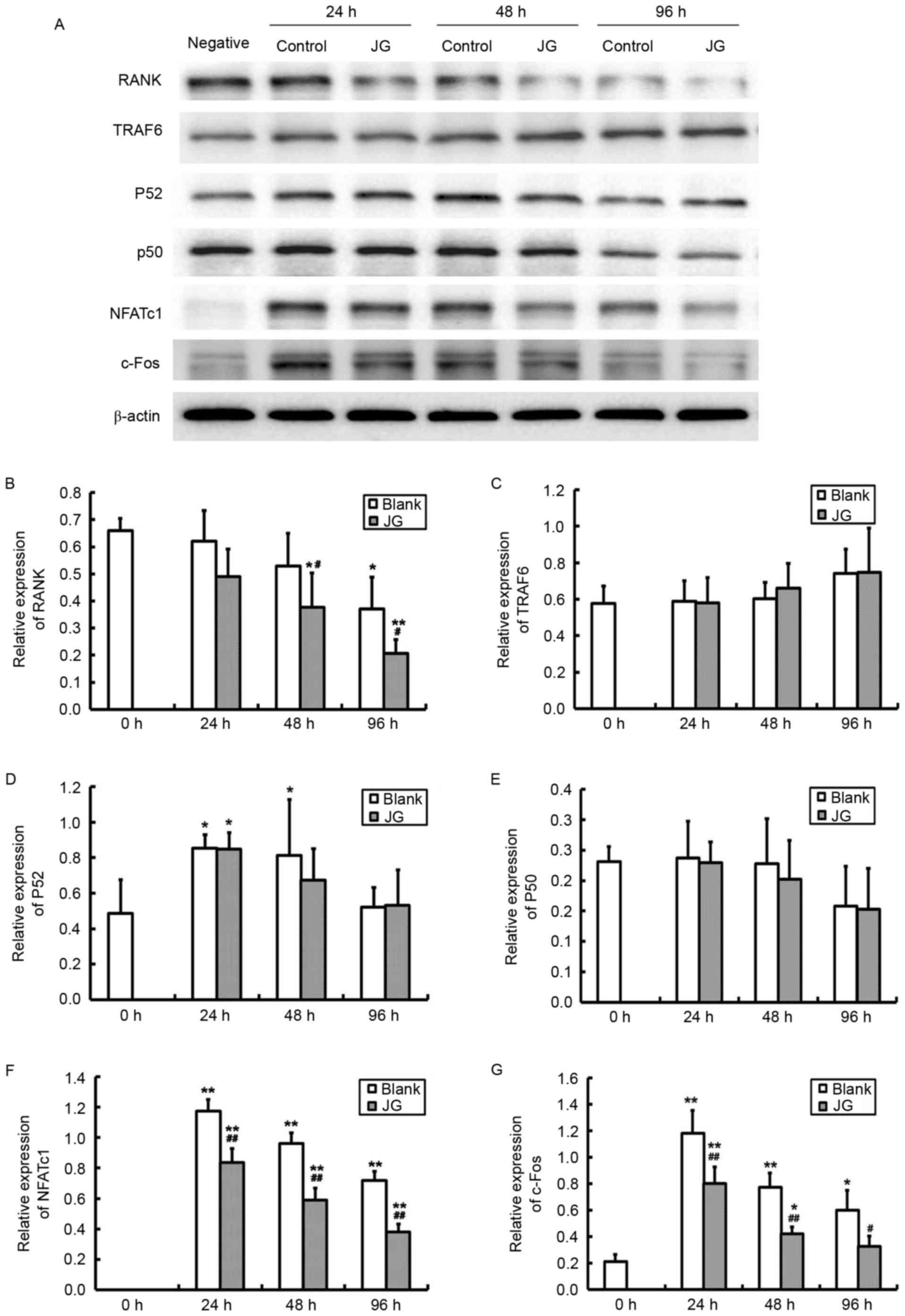|
1
|
Consensus development conference:
Diagnosis, prophylaxis, and treatment of osteoporosis. Am J Med.
94:646–650. 1993. View Article : Google Scholar : PubMed/NCBI
|
|
2
|
Pacifici R: Estrogen, cytokines, and
pathogenesis of postmenopausal osteoporosis. J Bone Miner Res.
11:1043–1051. 1996. View Article : Google Scholar : PubMed/NCBI
|
|
3
|
Seifert-Klauss V, Fillenberg S, Schneider
H, Luppa P, Mueller D and Kiechle M: Bone loss in premenopausal,
perimenopausal and postmenopausal women: Results of a prospective
observational study over 9 years. Climacteric. 15:433–440. 2012.
View Article : Google Scholar : PubMed/NCBI
|
|
4
|
de Villiers TJ: Bone health and
osteoporosis in postmenopausal women. Best Pract Res Clin Obstet
Gynaecol. 23:73–85. 2009. View Article : Google Scholar : PubMed/NCBI
|
|
5
|
Tella SH and Gallagher JC: Prevention and
treatment of postmenopausal osteoporosis. J Steroid Biochem Mol
Biol. 142:155–170. 2014. View Article : Google Scholar : PubMed/NCBI
|
|
6
|
Lacey DL, Boyle WJ, Simonet WS, Kostenuik
PJ, Dougall WC, Sullivan JK, San Martin J and Dansey R: Bench to
bedside: Elucidation of the OPG-RANK-RANKL pathway and the
development of denosumab. Nat Rev Drug Discov. 11:401–419. 2012.
View Article : Google Scholar : PubMed/NCBI
|
|
7
|
Bridgeman MB and Pathak R: Denosumab for
the reduction of bone loss in postmenopausal osteoporosis: A
review. Clin Ther. 33:1547–1559. 2011. View Article : Google Scholar : PubMed/NCBI
|
|
8
|
Wang XX, Zhang YL and Huang QF: Discussion
on the main pathogenesis in traditional Chinese medicine and
etiology about primary osteoporosis. Zhong Xi Yi Jie He Xue Bao.
8:1119–1123. 2010.(In Chinese). View Article : Google Scholar : PubMed/NCBI
|
|
9
|
Li DT, Li FY, Wang J, Liu JH, Yan N, Cheng
YM, Hu AH, Jiang HY, Shi FL, Zhang MZ, et al: A study of diagnostic
criteria for traditional Chinese medicine syndromes in
osteoporosis. Zhong Xi Yi Jie He Xue Bao. 9:1326–1332. 2011.(In
Chinese). View Article : Google Scholar : PubMed/NCBI
|
|
10
|
Lin YP, Zhou RX and Guo SM: Effect of
jiangu granule on quality of bone in model rats with osteoporosis
induced by ovariectomy. Zhongguo Zhong Xi Yi Jie He Za Zhi.
24:431–434. 2004.(In Chinese). PubMed/NCBI
|
|
11
|
Lin YP, Ma JH and Feng EY: Study on
preventive effect of jiangu granule on osteoporosis in
ovariectomized rats. Zhongguo Zhong Xi Yi Jie He Za Zhi.
22:369–371. 2002.(In Chinese). PubMed/NCBI
|
|
12
|
Livak KJ and Schmittgen TD: Analysis of
relative gene expression data using real-time quantitative PCR and
the 2(-Delta Delta C(T)) method. Methods. 25:402–408. 2001.
View Article : Google Scholar : PubMed/NCBI
|
|
13
|
Ju D, Liu M, Zhao H and Wang J: Mechanisms
of ‘kidney governing bones’ theory in traditional Chinese medicine.
Front Med. 8:389–393. 2014. View Article : Google Scholar : PubMed/NCBI
|
|
14
|
Li Y, Tong J, Zhou YJ and Xu XY: Research
progress on anti-osteoporotic active ingredients and
pharmacological action mechanism of traditional Chinese
kidney-tonifying and bone-strengthening drugs. Zhongguo Zhong Yao
Za Zhi. 40:1038–1043. 2015.(In Chinese). PubMed/NCBI
|
|
15
|
Crockett JC, Rogers MJ, Coxon FP, Hocking
LJ and Helfrich MH: Bone remodelling at a glance. J Cell Sci.
124:991–998. 2011. View Article : Google Scholar : PubMed/NCBI
|
|
16
|
Hadjidakis DJ and Androulakis II: Bone
remodeling. Ann NY Acad Sci. 1092:385–396. 2006. View Article : Google Scholar : PubMed/NCBI
|
|
17
|
Kartsogiannis V and Ng KW: Cell lines and
primary cell cultures in the study of bone cell biology. Mol Cell
Endocrinol. 228:79–102. 2004. View Article : Google Scholar : PubMed/NCBI
|
|
18
|
Väänänen HK, Zhao H, Mulari M and Halleen
JM: The cell biology of osteoclast function. J Cell Sci.
113:377–381. 2000.PubMed/NCBI
|
|
19
|
Liu C, Walter TS, Huang P, Zhang S, Zhu X,
Wu Y, Wedderburn LR, Tang P, Owens RJ, Stuart DI, et al: Structural
and functional insights of RANKL-RANK interaction and signaling. J
Immunol. 184:6910–6919. 2010. View Article : Google Scholar : PubMed/NCBI
|
|
20
|
Kuroda Y and Matsuo K: Molecular
mechanisms of triggering, amplifying and targeting RANK signaling
in osteoclasts. World J Orthop. 3:167–174. 2012. View Article : Google Scholar : PubMed/NCBI
|
|
21
|
Inoue Ji, Ishida T, Tsukamoto N, Kobayashi
N, Naito A, Azuma S and Yamamoto T: Tumor necrosis factor
receptor-associated factor (TRAF) family: Adapter proteins that
mediate cytokine signaling. Exp Cell Res. 254:14–24. 2000.
View Article : Google Scholar : PubMed/NCBI
|
|
22
|
Armstrong AP, Tometsko ME, Glaccum M,
Sutherland CL, Cosman D and Dougall WC: A RANK/TRAF6-dependent
signal transduction pathway is essential for osteoclast
cytoskeletal organization and resorptive function. J Biol Chem.
277:44347–44356. 2002. View Article : Google Scholar : PubMed/NCBI
|
|
23
|
Asagiri M and Takayanagi H: The molecular
understanding of osteoclast differentiation. Bone. 40:251–264.
2007. View Article : Google Scholar : PubMed/NCBI
|
|
24
|
Xing L, Bushnell TP, Carlson L, Tai Z,
Tondravi M, Siebenlist U, Young F and Boyce BF: NF-kappaB p50 and
p52 expression is not required for RANK-expressing osteoclast
progenitor formation but is essential for RANK- and
cytokine-mediated osteoclastogenesis. J Bone Miner Res.
17:1200–1210. 2002. View Article : Google Scholar : PubMed/NCBI
|
|
25
|
Soysa NS and Alles N: NF-kappaB functions
in osteoclasts. Biochem Biophys Res Commun. 378:1–5. 2009.
View Article : Google Scholar : PubMed/NCBI
|
|
26
|
Matsuo K, Owens JM, Tonko M, Elliott C,
Chambers TJ and Wagner EF: Fosl1 is a transcriptional target of
c-Fos during osteoclast differentiation. Nat Genet. 24:184–187.
2000. View Article : Google Scholar : PubMed/NCBI
|
|
27
|
Zhao Q, Wang X, Liu Y, He A and Jia R:
NFATc1: Functions in osteoclasts. Int J Biochem Cell Biol.
42:576–579. 2010. View Article : Google Scholar : PubMed/NCBI
|














